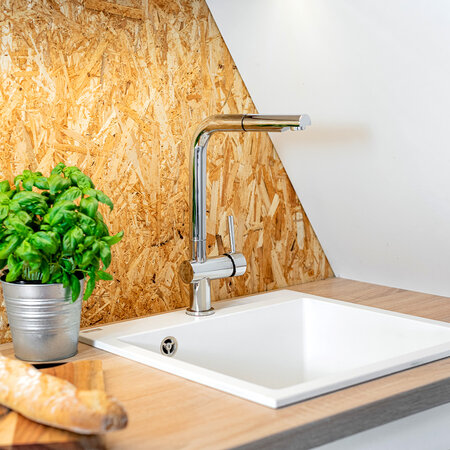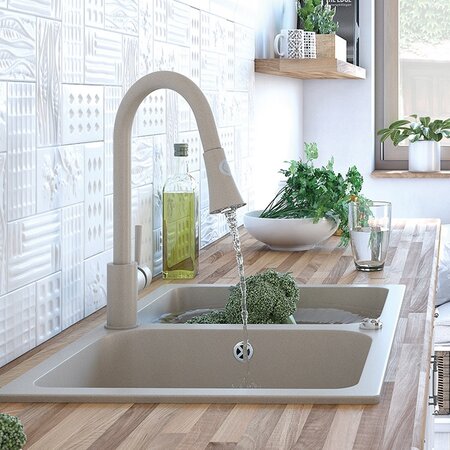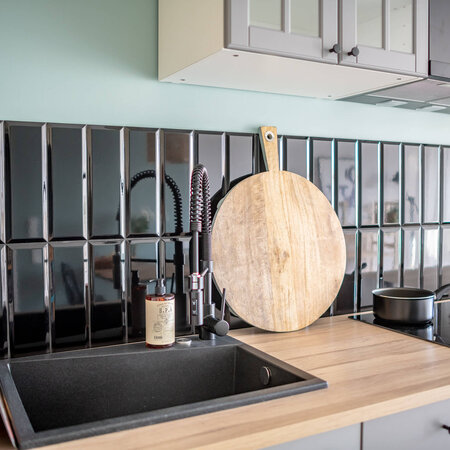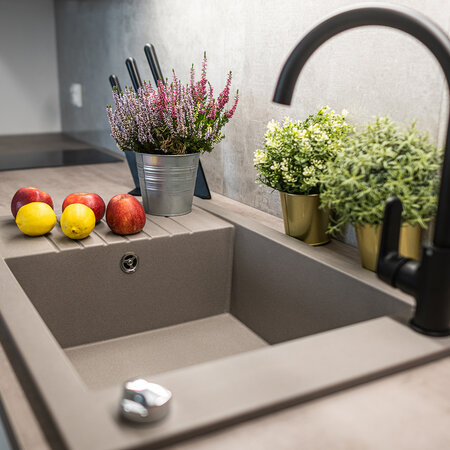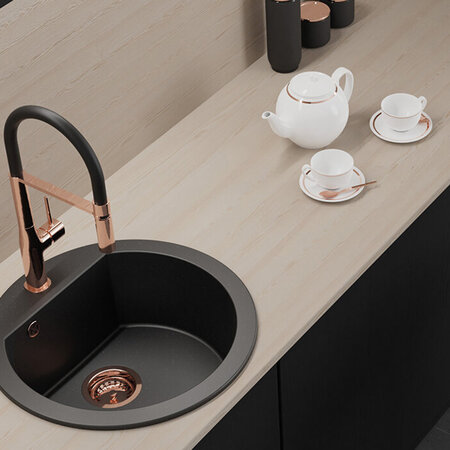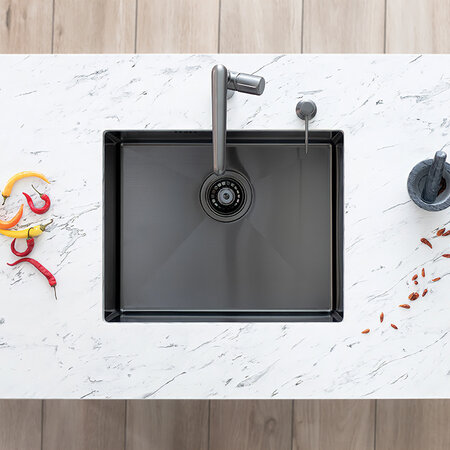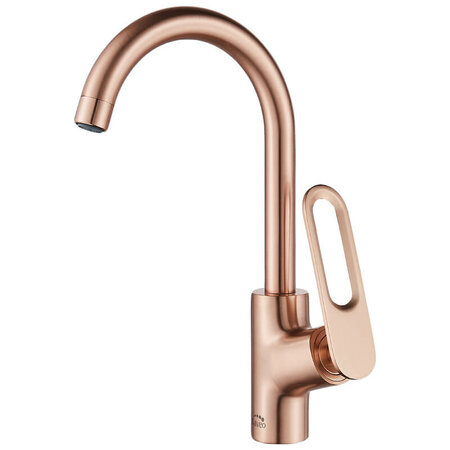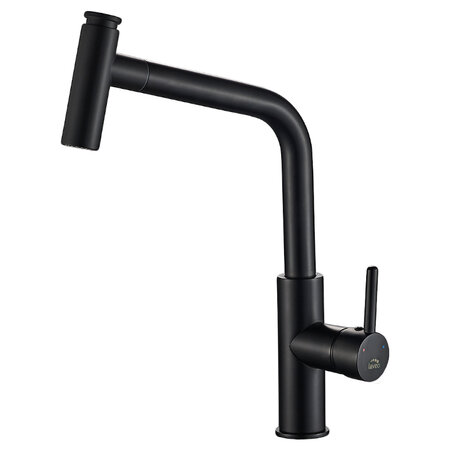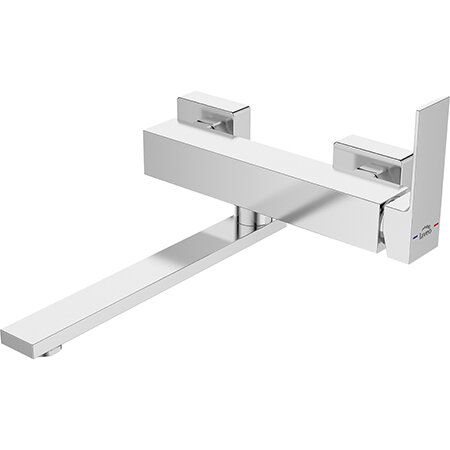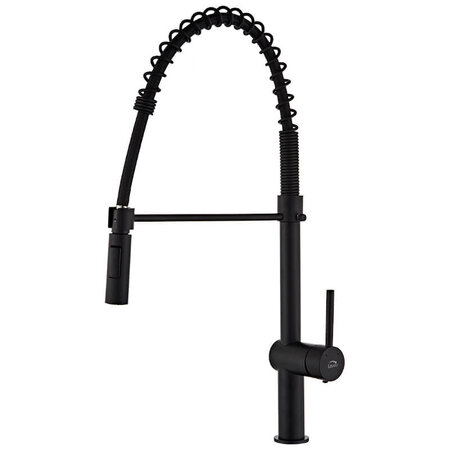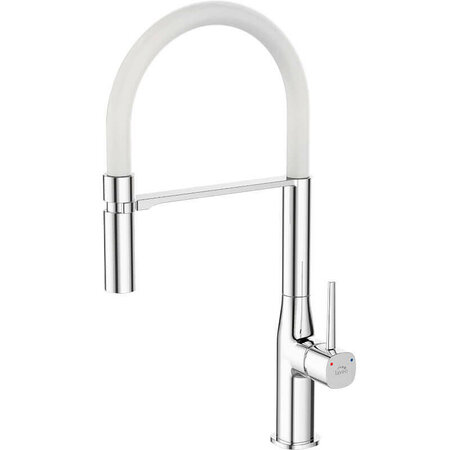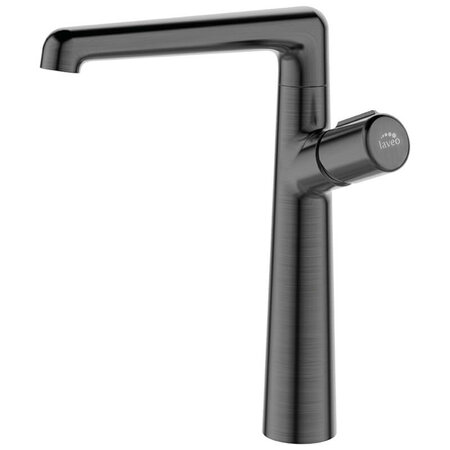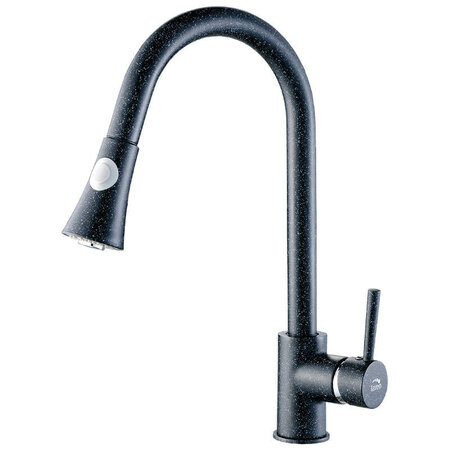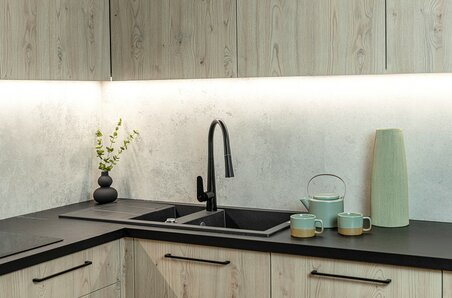Despite the fact that, in terms of number of bowls, the choice of sinks is little: either single or two, it is very often so hard to make up your mind. So what are advantages of single-bowl and two-bowl sinks then?
![]()
Which sink to choose? Which sink is better?
It is much easier to choose and adequate sink for a kitchen in renovation where there is no furniture yet or it is to be replaced. Then size of the sink is of no importance at all, as cabinets can be suited to the finally chosen model. Very often are you however faced with a replacement of the sink only, while keeping the old furniture. In such case your choice is quite limited due to the size of opening in the worktop. Note however that the opening for a bowl can be expanded, so the sink can be slightly larger than the previous one, of course on condition it fits the cabinet. The most comfortable are those who order furniture made-to-measure and do not use ready-made, modular enclosure. Then the size of the sink does not really matter – a carpenter will prepare the right cabinet which the chosen model fits.

Very often the choice of an appropriate model is determined by the size of the kitchen, and thus dimensions of kitchen cabinets. The smallest single-bowl sinks are slim and fit in a cabinet with a width of only 40cm. This is a great news for owners of bachelor flats and small apartments where the kitchen is of only a few square metres or a small kitchenette is provided instead. It does not mean that any single-bowl sink will have a compact size. Models with large bowls are often sinks for 70cm or even 80cm wide cabinets.
Two-bowl sinks are usually larger compared to single-bowl models, so larger furniture is required. In most cases a minimum width of a cabinet for two bowls is 80 cm.
If you care about a sink with an extra bowl, then a good solution might prove to be sinks with an additional, small bowl, so 1.5-bowl sinks. They allow to keep the functionality of two-bowl models and fit in 70cm wide cabinets, and some sinks can be mounted even in such ones with smaller dimensions.

When looking for a sink with parameters suitable for your kitchen at a manufacturer’s website, it is worth applying the available filters, if any, to be sure that the selected model fits in the cabinet you already own.
How to furnish the washing-up area?
Contrary to what one might expect, the answer is simple – first of all it should be comfortable. However what comfort means to each of us, is a much more complex a question. All depends on how and what you wash up and what is the sink used for. A two-bowl sink will be suitable for a kitchen without a dishwasher. One bowl can be used to soak dirty dishes, and the other to rinse them, thus saving water. Two bowls will prove to be useful for those who love cooking and spend a great deal of time in kitchen. One part of the sink can be used to keep necessary food products, and the other to put away dirty dishes and kitchenware.
Larger bowls (either one or two) are of a great importance when it comes to keeping it all tidy. In kitchen it is so easy to create a chaos. Just leave some vessels or spoons or forks on the worktop and you have a mess, thus losing the desired work area. A larger sink can accommodate more items, leaving the worktop unoccupied.
A sink with large bowl is also a good choice for a family of many people. In particular when there are small children, a pile of dishes to be washed up can rise so quickly and make a mess in the kitchen before the dishes are put in the dishwasher.
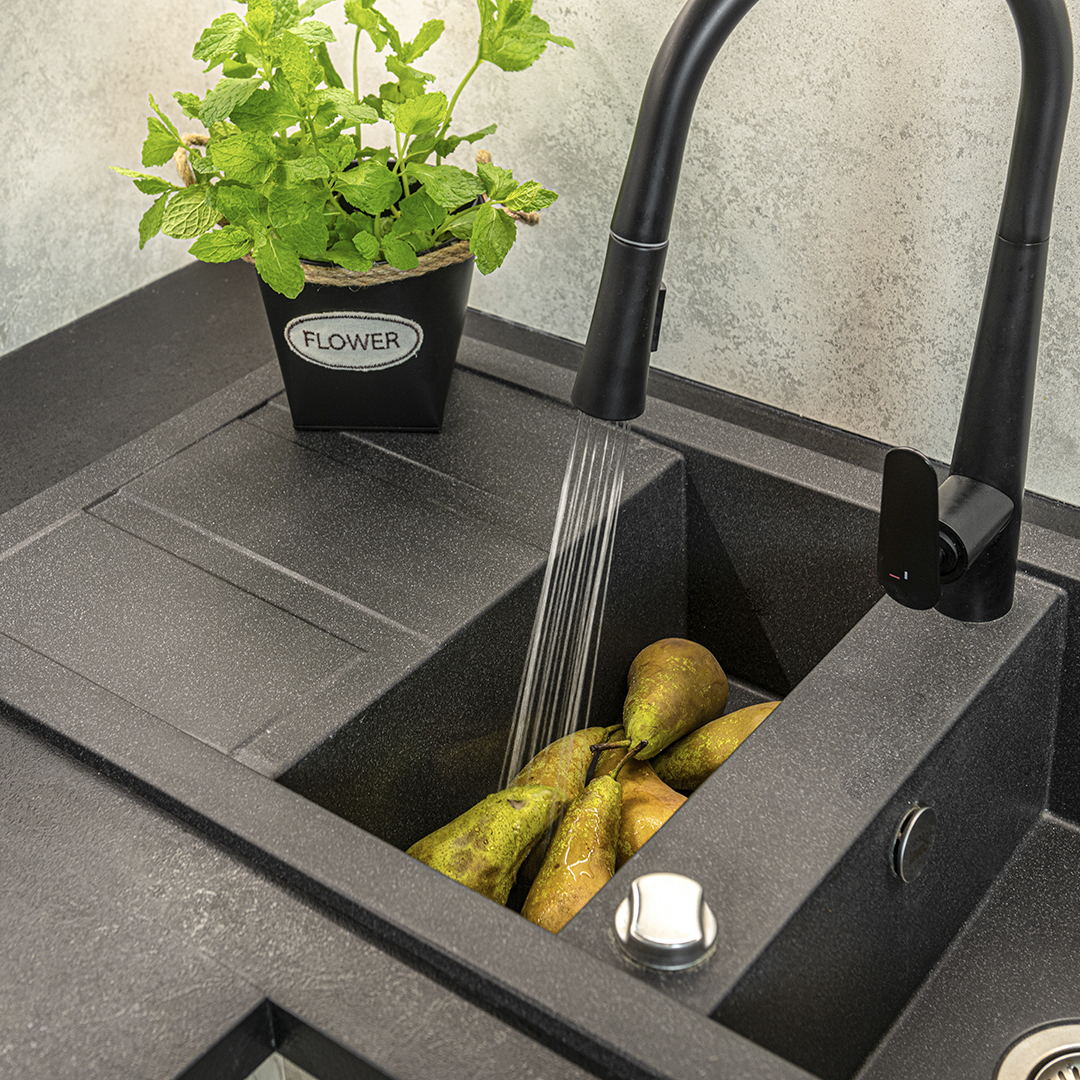
If you think that two full-size bowls is too much, and a single-bowl sink is missing something, choose a two-bowl model, whereas one of the bowls is apparently smaller. What is an additional bowl in a sink for? It is useful in kitchens without a dishwasher or in homes where families of many people live and a great number of dishes is used, while the area of the kitchen is relatively small. Small size of the additional compartment allows to upgrade functionality of the sink and keep a larger area of the worktop at the same time. Apart from that a smaller bowl will prove to be very useful when defrosting foods, washing vegetables and fruits or soaking cutlery before putting into the dishwasher.
Those who rarely cook, opt for box catering or eating out, will be pleased with a single-bowl sink. If a sink is supposed to accommodate only a cup after a morning coffee rather than pots and pans, a single bowl is just enough.
All sinks are available as both steel sinks and granite sinks.
Which mixer to choose?
A suitable kitchen mixer is of an utmost importance when it comes to the comfort of use of a sink. Larger bowls should be accompanied by mixer taps with greater reach or with either elastic or pull-out spout. It will help to comfortably rinse the whole sink, reaching extreme points. When you opt for a single-bowl sink, you will get the full functionality by installing either sink mixer. All – upright and wall-mounted – are fitted with swivel spout which can be folded along the wall, gaining a free access to the sink to put even large pots there.
Size of bowl versus kitchen aesthetics
 Apart from the performance, when choosing a sink to your kitchen, consider visual aspects. It is not only about colours or the material, though. Steel or granite sink? It is a matter of taste. On the other hand when designing an interior, it is worth taking the size of the sink into consideration.
Apart from the performance, when choosing a sink to your kitchen, consider visual aspects. It is not only about colours or the material, though. Steel or granite sink? It is a matter of taste. On the other hand when designing an interior, it is worth taking the size of the sink into consideration.
Large two-bowl models are a good choice for a kitchen island and an open kitchen where usually there is quite a lot of space, and obviously a single-bowl sink is just too small. Over a large space a small sink will simply vanish. The size of the sink should be suited above all to areas of kitchen worktops.
In turn, a sink for a bachelor flat should be proportional to the area of the kitchen and the whole flat, especially when the kitchen is not provided in a separate room, and you rather use a small kitchenette. It is important that a selected sink is not dominant in the interior.
Inset or undermount sink? Or lay on perhaps?
Single-bowl, 1.5-bowl and two-bowl sinks are available in undermount, inset and lay on versions. An undermount sink, due to visible edges of the opening, requires a top made of moisture-resistant material. Installation – due to a level of difficulty and high prices of tops – should be performed by a professional. Assembly on user’s own can be carried out successfully in the case of inset or lay on sink. How to mount a sink? In the first case, using a cutter a hole of an appropriate size should be cut in the worktop. It does not have to be perfectly even, as any possible curvature will be covered by the border of the sink. Lay on models are the easiest to mount as the sink is simply put on the cabinet.

